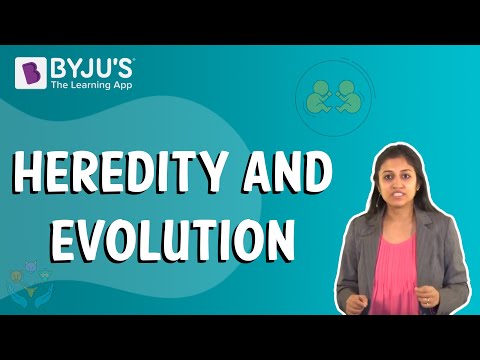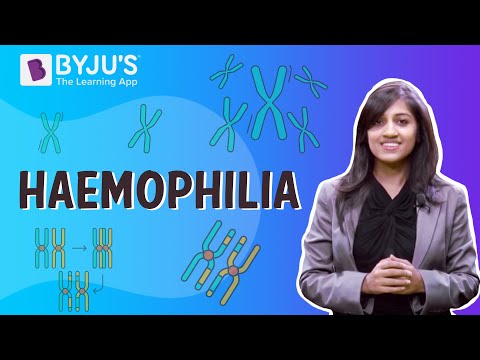KCET 2015 Biology question paper is available for download on this page. Students can score well in the examination by going through and practising the questions given in the KCET 2015 paper. Solving the questions will help the candidates to understand the important topics covered in the exam and to get familiar with the pattern of the question paper. More significantly, they will be able to prepare well for the entrance exam. The question paper PDF is given at the bottom.
KCET 2015 - Biology
- a. Bacterial artificial chromosome
- b. Yeast artificial chromosome
- c. Plasmid
- d. Cosmid
Solution:
- a. Inbreeding depression
- b. Self-incompatibility
- c. Formation of unisexual flowers
- d. Gametes loose vigour
Solution:
- a. Alleles IA and IB produce sugars
- b. Both IA and IB are present together and they express because of codominance
- c. Alleles b and c also produce sugar
- d. When IB and b or i are present only IB is expressed
Solution:
- a. Formaldehyde
- b. Methionine
- c. Phenylalanine
- d. Serine
Solution:
- a. Cytokine barrier
- b. Physiological barrier
- c. Physical barrier
- d. Cellular barrier
Solution:
- a. Aschelminthes
- b. Ctenophora
- c. Hemichordata
- d. Platyhelminthes
Solution:
- a. Both statement X and Y are correct
- b. Both statement X and Y are wrong
- c. Only statement X is correct and Y is wrong
- d. Only statement Y is correct and X is wrong
Solution:
- a. Parthenocarpy
- b. Apomixis
- c. Polyembryony
- d. Dormancy
Solution:
- a. Androgen
- b. LH
- c. GnRH
- d. FSH
Solution:
- a. 5- methyl uracil
- b. NH4Cl
- c. Uracil
- d. Guanine
Solution:
- a. Merino ewes with Bikaneri Rams
- b. Bikaneri ewes with Merino Rams
- c. Horse with Donkey
- d. Superior Bull with Superior Cow
Solution:
- a. Jawless fish
- b. Coelacanth
- c. Ichthyophis
- d. Amphioxus
Solution:
- a. Methane, Oxygen, Hydrogen sulphide
- b. Hydrogen sulphide, Methane, Sulphur oxide
- c. Hydrogen sulphide, Nitrogen Methane
- d. Methane, Hydrogen sulphide, Carbon dioxide
Solution:
- a. 0.03j
- b. 0.003j
- c. 0.3j
- d. 0.0003j
Solution:
- a. Seed bank
- b. Botanical garden
- c. Cryopreservation
- d. Biosphere reserves
Solution:
- a. Auxin, Gibberellins, Cytokinin
- b. Auxin, Gibberellins ABA
- c. Gibberellin, Auxin, Cytokinin
- d. Gibberellin, Auxin, ABA
Solution:
- a. Mg+
- b. K+
- c. Ca++
- d. S
Solution:
- a. Cells of all living organisms have a nucleus.
- b. Both animal and plant cells have a well-defined cell wall.
- c. In prokaryotes there is no membrane-bound cell organelles.
- d. Cells are formed de novo from abiotic materials.
Solution:
Solution:
- a. Lupine arcticus
- b. Strobilanthes kunthiana
- c. Dendrocalamus strictus
- d. Phoenix dactylifera
Solution:
- a. First trimester
- b. 8 weeks
- c. 12 weeks
- d. 5th month
Solution:
- a. It is an example of pleiotropy.
- b. It is an error in metabolism.
- c.It is a case of aneuploidy.
- d. Caused due to autosomal recessive trait.
Solution:
- a. A – q, B – s, C– p, D, – r
- b. A – s, B – p, C– q, D, – r
- c. A – r, B – s, C– p, D, – q
- d. A – q, B – p, C– s, D, – r
Solution:
- a. 28 SrRNA
- b. 5 SrRNA
- c. 5.8 SrRNA
- d. 18 SrRNA
Solution:
- a. Archaebacteria
- b. Thermoacidophiles
- c. Mycoplasma
- d. Methanogens
Solution:
- a. CO2 is a limiting factor to photosynthesis
- b. Tomatoes and bell pepper are not C3 plants
- c. CO2 enriched atmosphere leads to higher yields
- d. Diffused light in the greenhouse
Solution:
- a. juxta glomerular cells to release rennin
- b. adrenal cortex to release adrenaline
- c. adrenal medulla to release adrenaline
- d. posterior pituitary to release vasopressin
Solution:
- a. Dog
- b. Apple
- c. Ophioglossum
- d. Onion
Solution:
- a. Copper releasing IUDs
- b. Non-medicated IUDs
- c. Hormone releasing IUDs
- d. Ideal contraceptive
Solution:
- a. Sex unspecified
- b. Consanguineous marriage
- c. Unaffected offspring
- d. Normal mating
Solution:
- a.Cannabis sativa and Atropa belladonna
- b.Papaver somniferum and Erythroxylum coca
- c. Cannabis sativa and Papaver somniferum
- d.Erythroxylum coca and Atropa belladonna
Solution:
- a. Rice
- b. Maize
- c. Sugarcane
- d. Wheat
Solution:
- a. The amount of oxygen consumed if all the organic matter in 1000 ml of water were oxidized by bacteria
- b. The amount of oxygen released when all the organic matter was consumed by bacteria in 1 litre of water
- c. The oxygen required for bacteria to grow in 1 litre of effluent
- d. The amount of oxygen released if all the organic matter in 1000 ml of water were oxidized by bacteria
Solution:
- a. Endometrium
- b. Myometrium
- c. Perimetrium
- d. Corpus luteum
Solution:
- a. In vitro fertilization and embryo transfer
- b. Gamete intrafallopian transfer
- c. Zygote extra fallopian transfer
- d. Artificial insemination
Solution:
- a. 1560
- b. 1480
- c. 780
- d. 740
Solution:
Solution:
- a. Pyruvate is formed in the mitochondrial matrix
- b. During the conversion of Succinyl CoA to Succinic acid a molecule of ATP is synthesized
- c. Oxygen is vital in respiration for removal of Hydrogen
- d. There is a complete breakdown of glucose during fermentation
Solution:
- a. Recreation
- b. Climate regulation
- c. Nutrient cycling
- d. Soil formation
Solution:
- a. Identify ori site.
- b. To destroy recognition sites
- c. Eliminating transformants and permitting non-transformants
- d. Elimination of non-transformants and permitting transformants
Solution:
- a. Endemism– Species confined to one region and also found in other regions
- b. Alien species– Clarias gariepinus
- c. Lungs of the planet – Amazon rain forest
- d. Hot spots– Regions with species richness
Solution:
- a. DNA polymorphism
- b. Expressed sequence Tag
- c. Sequence annotation
- b. Linkage
Solution:
- a. Ensuring that all excess paper packaging is burned to ashes
- b. Promoting the use of private rather than public transport
- c. Converting tropical forests into grazing land for cattle
- d. Redesigning and fill dumps to allow methane to be collected
Solution:
- a. Insulin – Gluconeogenesis
- b. Glucagon – Glycogenolysis
- c. Oxytocin – Contraction of uterine muscles
- b.Prolactin – Milk production in mammary glands
Solution:
- a. Uracil
- b. Adenosine
- c. Adynylic Acid
- d. Cholesterol
Solution:
- a. The sugar is moved bidirectionally
- b. Loading of the phloem sets up a water potential gradient that facilitates the mass movement in the phloem
- c. As hydrostatic pressure in the phloem sieve tube increases pressure-flow stops and sap is accumulated in the phloem
- d. The sugar which is transported is sucrose
Solution:
- a. Slime layer
- b. Mesosome
- c. Capsule
- d. Cell wall
Solution:
- a. Electrical excitation of atria
- b. Return of the ventricles from excited state
- c. Depolarization of ventricles
- d. Beginning of systole
Solution:
- a. Discovery of Streptokinase
- b. Discovery of DNA sequence
- c. Establishing the potential of penicillin as an effective antibiotic
- d. Production of genetically engineered insulin
Solution:
- a. Sporozoites multiply in the blood
- b. Malignant malaria is caused by Plasmodium falciparum
- c. RBCs rupture and release haemozoin causes chills
- d. Female anopheles mosquito is the vector
Solution:
- a. Maternal meiosis – I
- b. Maternal meiosis – II
- c. Paternal meiosis – III
- d. Paternal meiosis –II
Solution:
- a. a polypeptide of 124 amino acids is formed
- b. a polypeptide of 25 amino acids is formed
- c. A polypeptide of 24 amino acids is formed
- d. No polypeptides are formed
Solution:
- a. Gases like Sulphur dioxide
- b. Particulate matter of the size 5 micrometers or above
- c. Gases like ozone or methane
- d. Gases like Nitrous oxide
Solution:
- a. Phyletic evolution
- b. Divergent evolution
- c. Convergent evolution
- d. allopatry
Solution:
- a. Humification
- b. Catabolism
- c. Leaching
- b. Fragmentation
Solution:
- a. A– Ethanol, B–CO2, C– Acetaldehyde
- b. A–CO2, B–Ethanol, C– Acetaldehyde
- c. A–Acetaldehyde, B–CO2, C– Ethanol
- d. A– Ethanol, B– Acetaldehyde, C– CO2
Solution:
- a. XO type of sex determines male sex in grasshopper</.p> b. XO condition in humans as found in Klinefelter's syndrome determines female sex
- c. Homozygous sex chromosome XX produce male in Drosophila
- d. Homozygous sex chromosome ZZ determines female sex in birds
Solution:
- a. Energy is saved because glycolysis and the citric acid cycle shut down
- b. The energy of respiration is converted into heat
- c. Hibernating animals can synthesize fat instead of wasting the energy of respiration
- d. Pyruvate is converted to lactic acid by anaerobic fermentation
Solution:






























